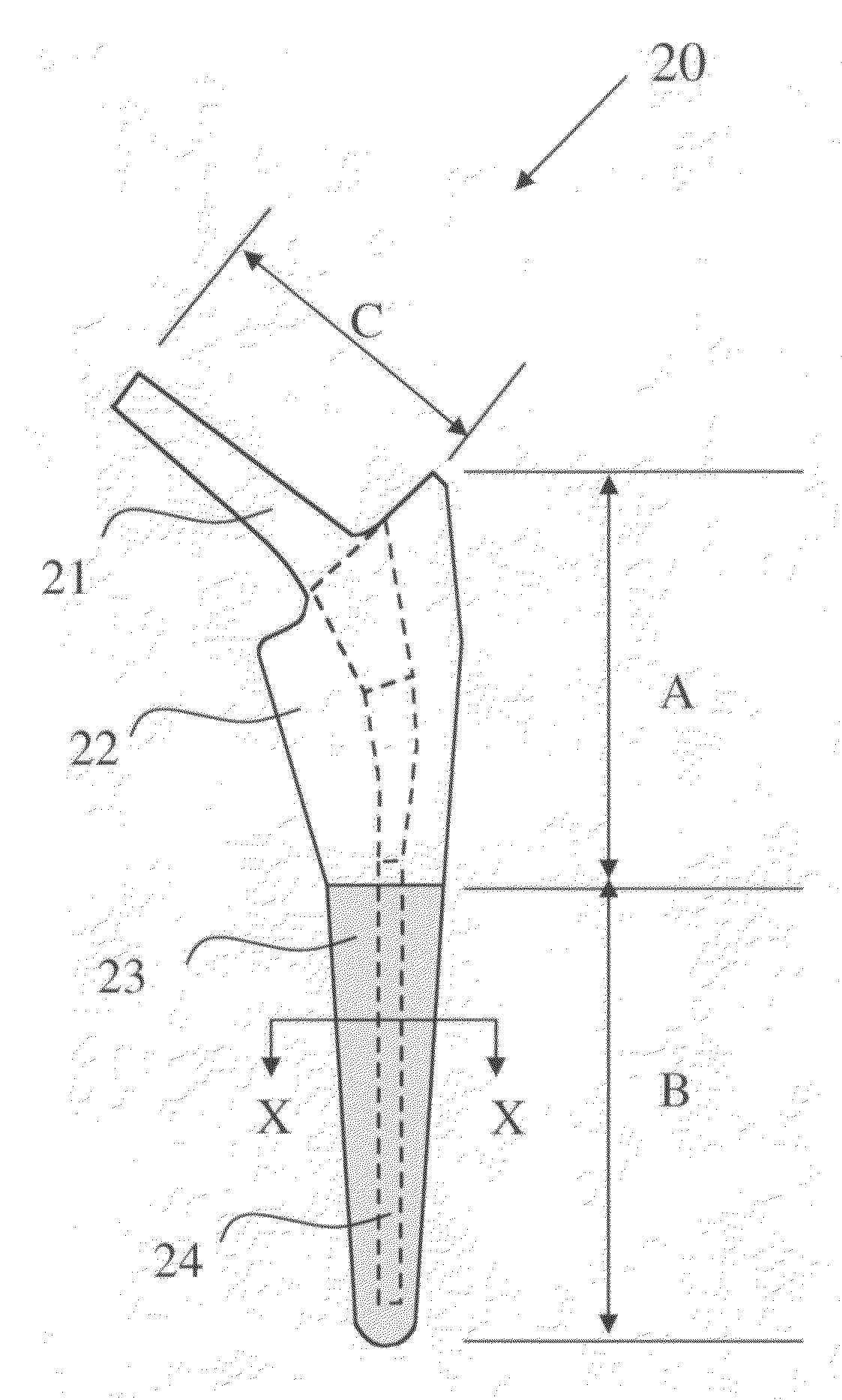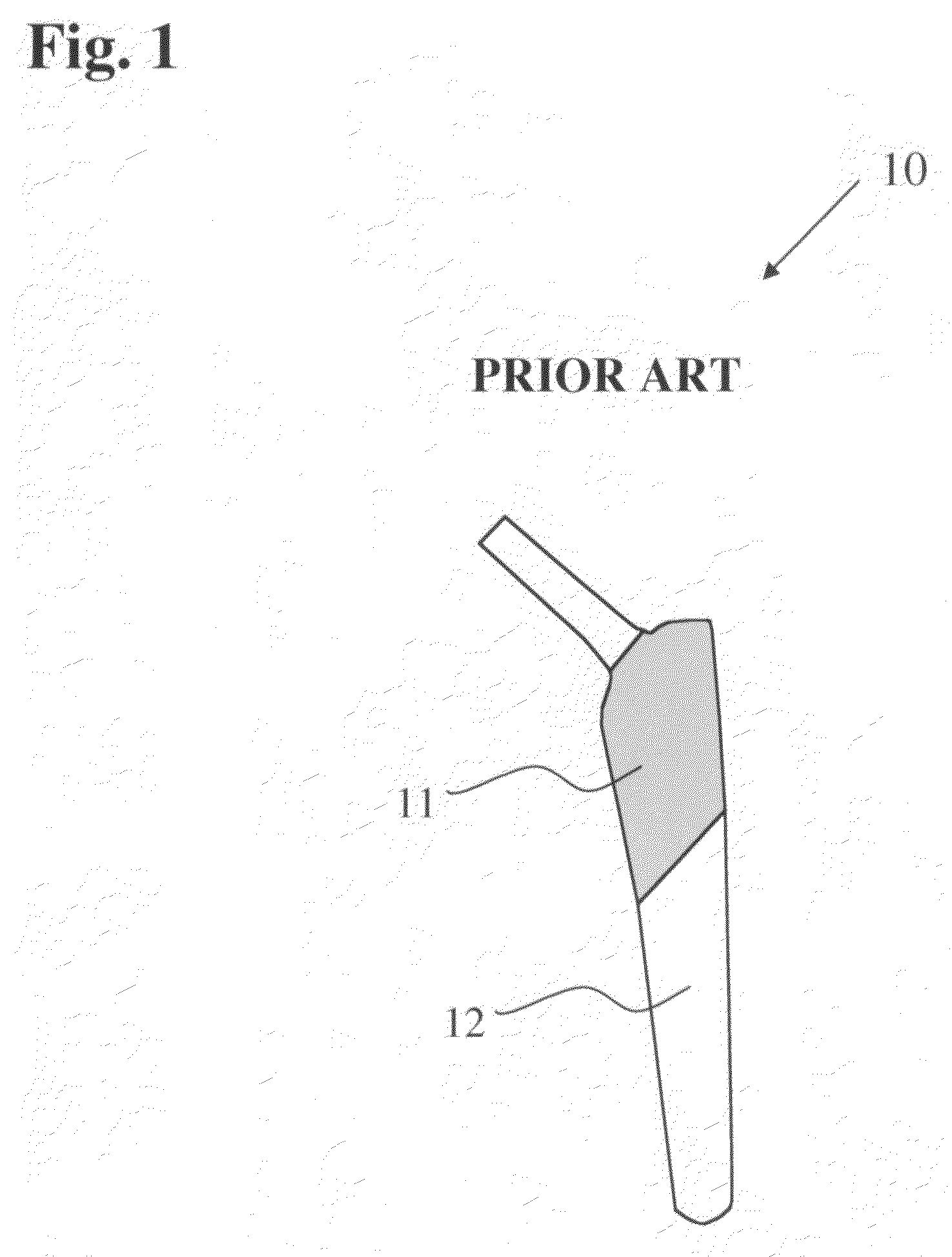Bone-compliant femoral stem
a femoral stem and bone technology, applied in the field of implantable bone prostheses, can solve the problems of buckling and other non-uniform deformation mechanisms, higher stem stress, and correspondingly decreased stem load carrying capacity,
- Summary
- Abstract
- Description
- Claims
- Application Information
AI Technical Summary
Benefits of technology
Problems solved by technology
Method used
Image
Examples
Embodiment Construction
[0035]This invention relates to a bone-compliant femoral stem which may be attached using cement or by way of a cementless procedure. The bone-compliant femoral stem is herein described with particular reference to use in canines. However, it will be understood that the principles of the invention are fully applicable to use of the femoral stem in humans. The bone-compliant canine femoral stem comprises a slender biocompatible metallic support member made from a Ti alloy, preferably Ti—Al—V alloy or a chromium alloy. The dimensions of the slender metallic body are generally much less than the surgically prepared bone cavity and are of a size sufficient to withstand the stresses provided by a canine patient immediately after a surgical procedure. The slender metallic support member is completely surrounded in the proximal and distal region by a porous biocompatible member, preferably a titanium member, which is diffusion bonded or mechanically attached to the slender metallic support...
PUM
| Property | Measurement | Unit |
|---|---|---|
| thickness | aaaaa | aaaaa |
| thickness | aaaaa | aaaaa |
| thickness | aaaaa | aaaaa |
Abstract
Description
Claims
Application Information
 Login to View More
Login to View More - R&D
- Intellectual Property
- Life Sciences
- Materials
- Tech Scout
- Unparalleled Data Quality
- Higher Quality Content
- 60% Fewer Hallucinations
Browse by: Latest US Patents, China's latest patents, Technical Efficacy Thesaurus, Application Domain, Technology Topic, Popular Technical Reports.
© 2025 PatSnap. All rights reserved.Legal|Privacy policy|Modern Slavery Act Transparency Statement|Sitemap|About US| Contact US: help@patsnap.com



